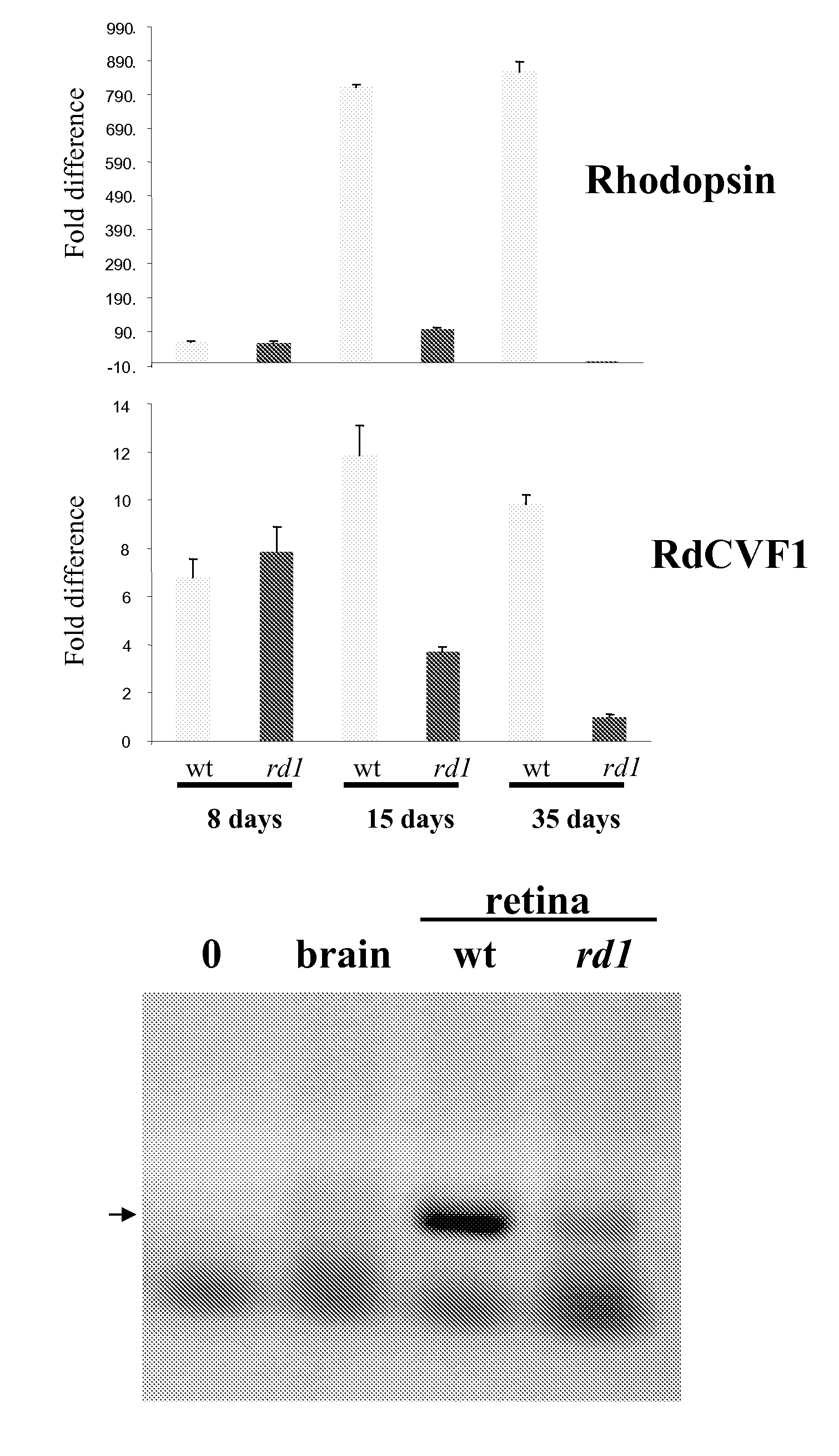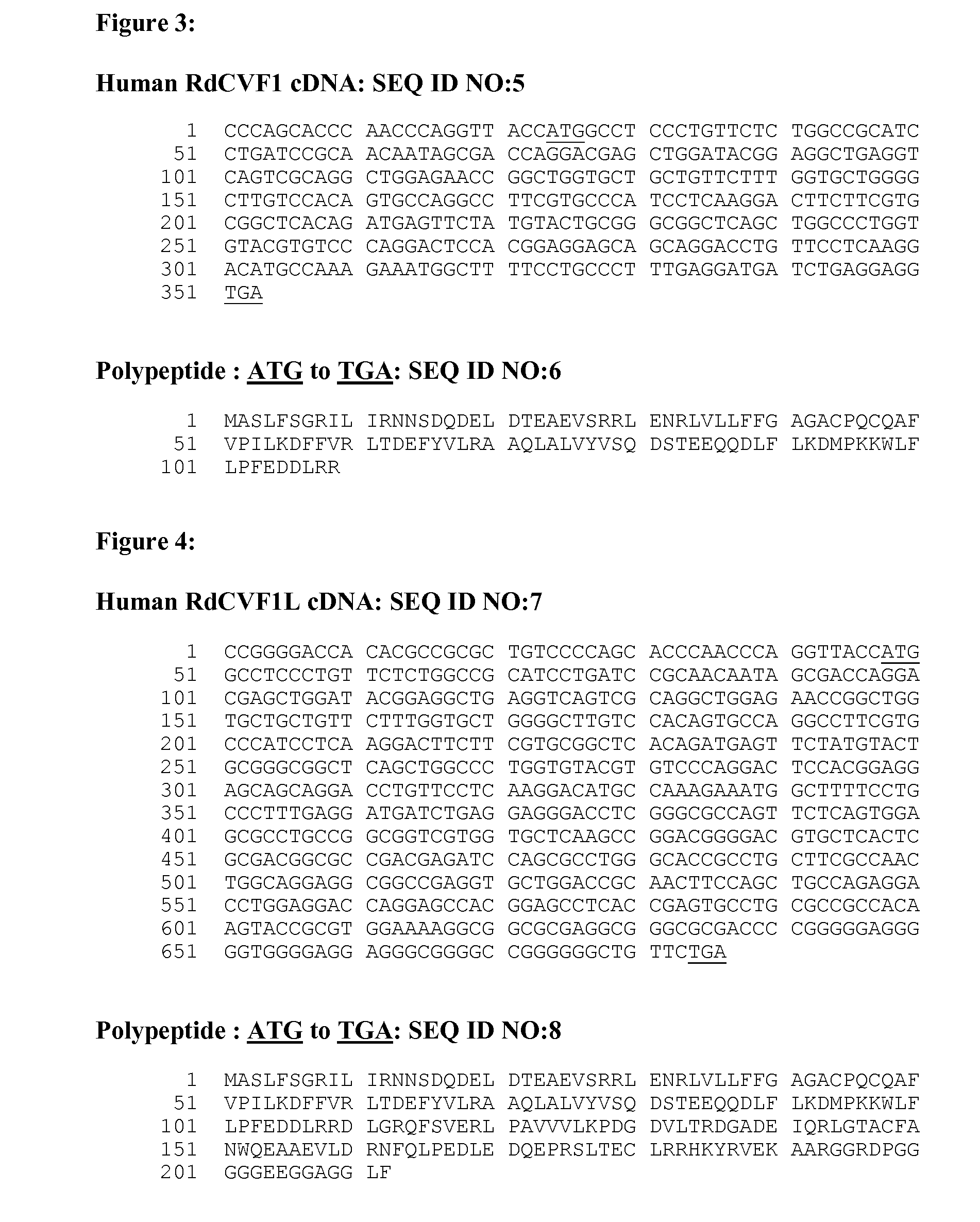Disease-Associated Protein
a disease-associated protein and disease-associated protein technology, applied in the direction of drug compositions, immunoglobulins against animals/humans, peptides, etc., can solve the problems of vascular changes leading to ischemia and gliosis, inexorably blindness, and decreased overall efficiency of the propagation of electrical signals generated by photoreceptors
- Summary
- Abstract
- Description
- Claims
- Application Information
AI Technical Summary
Benefits of technology
Problems solved by technology
Method used
Image
Examples
examples
[0157]1) Total ARN Purification from Five Weeks Normal Mouse Retinas:
[0158]The cDNA library was constructed from retinas of Five weeks old C57BL / 6@N mice generally according to the method of Glissin et al (1974), Biochemistry, 13, 2633-2637. Briefly, after killing, animals were enucleated and the eyes were first placed in Phosphate Buffer Saline (PBS) supplemented with 0.1% DiEthyl PyroCarbonate (DEPC). Neural retina was quickly dissected (the retinal pigmented epithelium was omitted in this tissue preparation). Quickly after each dissection, tissues were homogenised in fresh 6 M Guanidinium Chloride. Ten retinas were pooled in 2.4 ml GC in 4 ml sterile tubes, and the tissue was disrupted completely by strong homogenisation for 1 minute at room temperature.
[0159]Messenger RNA (mRNA) Purification from Five Weeks Normal Mouse Retina:
[0160]mRNA was isolated on oligo-dT coated porous beads (Oligotex, Qiagen) under stringent conditions according to the method of Kuri...
PUM
| Property | Measurement | Unit |
|---|---|---|
| temperatures | aaaaa | aaaaa |
| temperatures | aaaaa | aaaaa |
| temperature | aaaaa | aaaaa |
Abstract
Description
Claims
Application Information
 Login to View More
Login to View More - R&D
- Intellectual Property
- Life Sciences
- Materials
- Tech Scout
- Unparalleled Data Quality
- Higher Quality Content
- 60% Fewer Hallucinations
Browse by: Latest US Patents, China's latest patents, Technical Efficacy Thesaurus, Application Domain, Technology Topic, Popular Technical Reports.
© 2025 PatSnap. All rights reserved.Legal|Privacy policy|Modern Slavery Act Transparency Statement|Sitemap|About US| Contact US: help@patsnap.com



